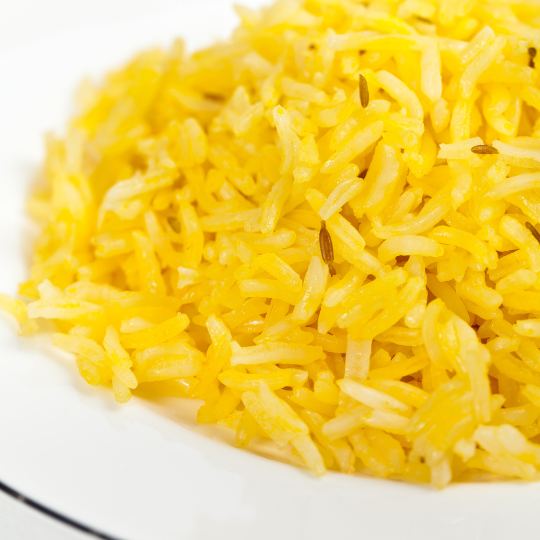Yellow rice, with its vibrant hue and aromatic flavors, is a beloved staple in many cuisines, particularly in Latin American and South Asian cooking. Whether you’re enjoying it as a side dish, part of a flavorful biryani, or as a base for a hearty paella, the question often arises for individuals with gluten sensitivities or celiac disease: Is yellow rice gluten-free? In this blog post, we’ll explore the gluten-free status of yellow rice, its ingredients, and how you can savor this colorful delicacy while maintaining a gluten-free diet.
Understanding Yellow Rice:
Yellow rice, also known as saffron rice, gets its characteristic color and flavor from the use of saffron, turmeric, or other spices and seasonings. It’s commonly prepared by cooking rice with these aromatic ingredients, creating a fragrant and visually appealing dish.
Examining the Ingredients:
To determine whether yellow rice is gluten-free, let’s delve into its primary components:
- Rice: The main ingredient in yellow rice is, of course, rice. Rice is naturally gluten-free.
- Spices and Seasonings: Yellow rice gets its distinctive color and flavor from spices like saffron, turmeric, cumin, and other seasonings. These spices are gluten-free.
- Stock or Broth: Some recipes for yellow rice call for the use of chicken or vegetable stock or broth. When using store-bought stock or broth, it’s essential to check the label for any hidden sources of gluten.
- Butter or Oil: Some variations of yellow rice may include butter or oil for added richness and flavor. These ingredients are gluten-free.
The Gluten-Free Status of Yellow Rice:
In its most basic form, yellow rice made with rice and spices is naturally gluten-free. However, the gluten-free status of yellow rice can be influenced by additional ingredients and preparation methods. Here’s how to ensure you’re enjoying gluten-free yellow rice:
- Read the Label: If you’re using a packaged yellow rice mix or pre-made yellow rice, carefully read the product label for any statements about gluten content or cross-contamination.
- Homemade Yellow Rice: For complete control over the ingredients, consider making yellow rice at home using gluten-free rice, gluten-free spices, and gluten-free stock or broth.
- Restaurant Precautions: When dining at a restaurant, inquire about the ingredients used in their yellow rice preparation, including any seasonings or stock they use.
- Gluten-Free Variations: Many brands offer gluten-free versions of their rice mixes. Look for these options if you have concerns about gluten.
Yellow rice, with its golden hue and aromatic spices, is a delightful addition to any meal. In its purest form, yellow rice made with rice and gluten-free seasonings is gluten-free. To enjoy this flavorful dish with confidence, always check product labels, ask questions when dining out, and consider making homemade yellow rice using gluten-free ingredients. With these precautions in mind, you can savor the vibrant and savory goodness of yellow rice while maintaining a gluten-free diet and exploring the world of international cuisine.
